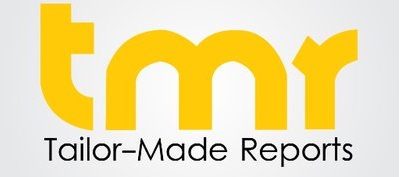Thousands of deaths are occurring on a yearly basis on account of various viral infectious diseases. Some of the viral diseases occurring are rabies, avian influenza, HIV-1, measles, enterovirus, poliovirus, coronavirus, and Metapneumovirus.
This has resulted in global public health concerns. Common influenza, contagious infections, and serious pandemics are some of the issues that need clinical prognosis for an early detection of the infectious agent. It is thus essential to identify the viral pathogens so as to prevent transmission, make use of the necessary therapy, and monitor the effect of the therapy. This will ultimately lead to disease diagnosis, management, and control.
The report identifies latest technological advancements in viral diagnosis such as mass spectrometry, polymerase chain reaction, and next generation sequencing. It discusses how these new viral diagnosis methods are being applied for the identification and management of viral disease diagnosis. Such new advancements have revolutionized clinical viral disease diagnosis and can efficiently and quickly detect viral pathogens.
Click Here to Request a sample copy of the Report
The study also discusses key challenges facing the global viral disease diagnosis market such as high cost, which is limiting the use of these diagnostics in many laboratories and healthcare centers. High cost is especially becoming a problem in resource limited settings. However, the emergence of microfluidic technology is attracting many biomedical research groups and is estimated to hold immense growth potential in the field of viral disease diagnosis. Moreover, this technology can be a cost effective means to diagnose viral disease.
Global Viral Disease Diagnosis Market: Overview
Viruses are minute organisms that are made up of genetic material and can cause infection in the body. These viruses invade and attach themselves to a host cell, thus killing or altering the function of that cell. This results into an infection in the human body. There are several ways by which viruses can be transmitted such as contact with infected person, and unsafe sex. Poor personal hygiene also increases the risk of virus infection.
Viral disease diagnosis is crucial to reduce the risk of epidemics and to provide treatment in a timely manner. High burden of viral diseases continues to be a public concern across communities in the world.
The report is presented collecting data from industry-centric databases and using validated analytical tools for scrutiny of the information.
Click Here to Request TOC of the report
Global Viral Disease Diagnosis Market: Drivers and Restraints
The increasing incidence of viral infections, clinical research, and technological advances in molecular diagnostics are some of the major factors driving the global viral disease diagnosis market. Moreover, development of precise rapid screening tests with improved detection time and choice of effective treatments is further propelling the market’s growth.
However, continuous variation in viral genome and varied environmental conditions lead to several strains of viruses which may challenge the utilization of existing viral disease diagnostic tests. Moreover, lack of expertise, low awareness about diagnostic tests, and limited availability of virological laboratories especially in developing countries may result in underutilization of viral disease diagnostic tests by clinicians.
Global Viral Disease Diagnosis Market: Market Segmentation
The global viral disease diagnosis market is segmented on the basis of diagnostic test, end users, virus type, and geography. On the basis of diagnostic test, specimen examination, serodiagnostic tests, and viral isolation are the segments of the market. Specimen examination involves direct examination of specimen for presence of virus antigen using light microscopy, electron microscopy, and various molecular techniques.
Serodiagnostic tests involve several serological methods to detect virus specific immunogens or viral antigens. The sub-segments of serodiagnostic tests are complement fixation test, hemagglutination inhibition test, particle agglutination, single radial hemolysis, western blot, immunofluorescence technique, neutralization test, ELISA, line immunoassay, and recombinant immunoblot assay (RIBA).
By end users, physician offices, commercial laboratories, physician offices, and nursing homes are the segments of the global viral disease diagnosis market. By virus type, Adenovirus, Cytomegalovirus, Dengue virus, Enterovirus, Hepatitis virus (HAV, HCV, HBV), HIV-1, Human Coronavirus, Human Metapneumovirus, Human Rhinovirus A, Measles Virus, Poliovirus, Rabies virus, Varicella Zoster virus, Avian Influenza, Coxsackievirus, Epstein-Barr virus (EBV), Lymphocryptovirus, Herpes virus (HSV-1, HSV-2), HIV-2, Human Herpesvirus, Human Papillomavirus (HPV), Influenza virus, Mumps virus, Rubella virus, Syncytial virus (RSV), West Nile virus, and others are the segments of the market.
Click Here to Read Comprehensive Overview of Report
By geography, the report divides the global viral disease diagnosis market into North America, Asia Pacific, Europe, and Rest of the World.
Companies Mentioned in Report
The report mentions and profiles top companies operating in the global viral disease diagnosis market, namely Abbott Laboratories, Cepheid, Roche Diagnostics, Thermo Fischer Scientific, bioMerieux, Becton Dickinson and Company, Affymetrix, Novartis Diagnostics, and Siemens.
























